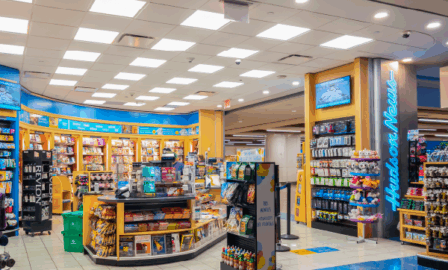Prepare for the 2021 Holiday Season: Retailers Warn Shoppers
The 2021 holiday season this year will be longer than ever before. Retailers across the globe face uncertainty and risk from supply chain challenges to difficulties related to COVID-19 and the Delta variant’s uncertainty. Raw material and labor shortages, global shipping issues, and inflation are a few of the matters creeping into this year’s holiday season. With these challenges, consumers’ rising demand is increasing stress on production, especially overseas.
Overcoming Unavoidable Challenges for the 2021 Holiday Season
Companies across the nation are confronted with increasing consumer demand and online spending, with sales of some products dropping significantly and some rising significantly. When the 2020 quarantines started, demand for products like Play-Doh, Monopoly, and Nerf spiked as families looked for ways to entertain themselves in their locked-down environments. Some of the Economic Stimulus programs helped to support consumer spending – including on things like toys. As a result, 2020 Holiday toy sales were up 16% from 2019. Volatility continues in 2021, as stimulus programs wind down and the Delta variant winds up – creating uncertainty around demand for toys in Holiday 2021.
Dwindling Capacity
One of the biggest challenges for a retailer is securing the capacity to support its seasonal business fluctuation. Missing holiday sales means that those sales are lost – around 80% of toy sales happen during the holidays. Early in 2021, toy companies placed bets on this year’s holiday sales and secured capacity with manufacturers accordingly. Looking back to earlier in 2021, it appeared as though the U.S. might have begun recovering from the pandemic – the economy was rebounding, movie theatres were reopening – so toy companies planned their purchases accordingly. Their ability to change their supply plans late in the year to reflect changing demand is limited, and supply is not expected to catch up with demand until 2022, according to Richard Gottlieb of Global Toy Experts.
Production Struggles
When COVID hit China in 2020, manufacturing capacity was hit hard and early – factories shut down as workers became ill or quarantined in their hometowns away from the manufacturing centers. Some of those workers haven’t returned, so while the manufacturing sector in China has largely recovered, capacity is reduced from pre-pandemic levels. While several manufacturers began shifting production outside of China prior to the pandemic, experts predict that most will maintain manufacturing in China for the near future.
Likewise, Chinese shipping was hit hard and early in the pandemic. Ports were shut down at the same time that demand for some goods increased, so there was a significant backlog when ports reopened. Similar to manufacturing, shipping reopened with lower capacity – due to lost workers and COVID protocols that increased separation and reduced throughput. Even recently, a central container terminal at China’s Ningbo-Zhoushan Port remained shut a week after operations were suspended from a single Covid-19 case. If a single COVID case can shut down a major port, the threats facing production throughout the rest of the year yield significant uncertainty for the industry. Since over 85% of toys come from China – it’s a costly and time-consuming process to reroute those ships to other, more distant ports or diversify manufacturing locations.
Transportation Delays and Rising Prices
Rising demand coupled with limited supplies and dwindling incentives to fill job positions leads to continued production delays and widespread factory shutdowns. With the COVID-19 pandemic and the Suez Canal blockage earlier this year, the industry still faces transportation issues, inventory pileups, and high-priced shipping containers. One industry expert said the cost in September of sending one 40-foot container from Asia to Europe had risen to $17,500, more than ten times the price of a year ago. The backlog and subsequent post-pandemic shipping spike also led to a container shortage. Ocean containers are now in short supply – either in-use or stuck in destination ports. The fact that container ships have grown more significant in the last decade has amplified this shortage – more containers per ship and fewer sailings means that more containers are tied up for more extended periods.
Some retailers have altered their shipping networks so that products ship out of multiple ports rather than the closest port to their factories to reduce the risk of their product being stuck in a port that is shut down or slowed down. Likewise, they have booked more sailings with alternate carriers. All of this comes at a cost – higher shipping costs to port, higher container costs because of scarcity, higher shipping costs because demand for shipping is high. The cost of getting products to the U.S. for the 2021 holidays has increased significantly, and retail companies have to decide how much of that cost to pass on to the consumer (in an uncertain pandemic economy).
Logistics issues may also prevent stores from meeting their consumers’ needs; shoppers may leave stores empty-handed this holiday season with lists unfulfilled. Stores likely will not have the supply to meet the demand, and kids will not get the toys they hoped for. Families have the money to spend, but with logistics issues, the inventory might not be there. In fact, UBS reports that Amazon’s Prime Day was “muted for toy sales.” Additionally, several companies have increased retail prices – estimated up to 25% – to compensate for lingering COVID-19 economic impacts like supply chain shortages.
Planning Ahead
With these inevitable challenges, retailers need to be communicating their expectations to shoppers. Consumers should not only begin their holiday shopping long before Black Friday, but they may want to have contingency plans for gifts that may arrive late. With the industry’s uncertainty, companies would see better results in being honest and transparent with their consumers. Conveying the reality of production to their shoppers, retailers will avoid under-delivering and set up the potential to exceed expectations. It’s especially vital to make sure to not oversell during the holiday season. As bad as losing a sale is due to not having supply, it’s not nearly as bad as losing the trust of a customer forever when you tell them they’ll have something for the holiday only to be left wondering when their package will arrive.
Retail giants Walmart and Target have already made strides to overcome some of these challenges, hiring their own cargo ships and planes to ensure transportation and secure inventory. Similarly, some brands have opted to use pricier cargo planes to import their products. Big retailers have the ability and resources to act proactively. However, smaller ones do not have that same luxury. By sharing the realities of the industry to consumers, any delays this holiday season will not throw shoppers by surprise. Instead, transparency will provide shoppers with more preparedness and lowered, pragmatic expectations.
Subscribe to Clarkston's Insights
Coauthor and contibutions by Rachel Ruth



